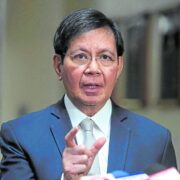Why inclusive health care is good economics

Asia Pacific is set to top the world in health-care inflation in 2025, hitting 12.3 percent, outpacing the global average of 10.4 percent. The Philippines is also bracing for spikes in health-care costs of over 18 percent—well above the global average.
With individuals bearing the largest share of health-care costs in the Philippines at 44.4 percent (the third highest in Southeast Asia), getting sick is becoming increasingly unaffordable.
These pressures are further compounded by a widespread shortage of health-care professionals. The Philippines alone has less than one physician per 1,000 people, compared to 2.6 in Singapore and 2.3 in Malaysia. With both costs and capacity under strain, the weight of these challenges lands on the backs of hospitals, health-care providers, insurers, and ultimately on individuals.
What’s often overlooked is that improving people’s health is not just the responsibility of governments. Consumer health-care businesses also have a role and a clear stake in it. By empowering people to practice self-care, we aim to complement professional health care, alleviate pressure on public systems, and improve health outcomes for all.
At its core, self-care is about enabling people to manage everyday health needs. Done right, it can ease demand on overstretched government health systems, empower individuals, and unlock enormous economic value.
Many common conditions remain untreated, not because people are unwilling to seek care, but because of a lack of access to the right information, tools, or means. Across Southeast Asia, 57 percent experience tooth sensitivity, but only 8 percent seek care. In the Philippines, 90 percent lack iron and folate, and over 75 percent are deficient in vitamins B, C, and calcium, yet less than 15 percent take supplements.
The economic case for inclusive health models. Health Inclusivity Index, a 40-market study focusing on the economic and health benefits of addressing health inclusion gaps, shows that individuals with low health literacy can face nearly three times higher healthcare costs. Further, improving health literacy by just 25 percent could generate more than $303 billion in economic returns globally, including $ 1.1 billion (P66 billion) in the Philippines.
Another example is gum disease, often dismissed as a minor oral health issue, yet strongly linked to a higher risk of type 2 diabetes. As with many health challenges, the burden hits low-income communities the hardest due to limited access to dental care, lower health literacy, financial barriers, and higher exposure to risk factors. In the Philippines, the projected diabetes-related health-care costs linked to gum disease are projected to soar to $923 million (P55.3 billion) over the next decade. Effective gum disease management could reduce this burden and unlock an estimated $169 million (P10.1 billion) in savings, nearly half of which (46 percent) would directly benefit the lowest-income groups.
This is a compelling call to prioritize access, education, and early intervention, areas where Haleon’s brands are playing a vital role by empowering individuals with targeted nutritional, oral care, and pain relief solutions, thus improving health literacy and the adoption of preventive habits at home.
Making everyday health for all a reality. For businesses operating in the region, bringing everyday health to more people should begin with awareness, affordability, and accessibility.
Start with the product. In many Southeast Asian markets, daily wage earners face tough choices when it comes to health spending. Offering smaller, lower-cost formats of essential products can make a real difference.
Education is another lever. Public-private partnerships that deliver targeted health messaging can play a role in improving community health literacy. In the Philippines, we are working closely with public sector partners on programs that promote healthy aging and preventive care. These initiatives include free bone density screenings for seniors, educational outreach on osteoporosis prevention, and improved access to supplements, all aimed at helping individuals make more informed decisions about their health.
Digital platforms and tools are another major opportunity to scale impact when designed with real-world constraints in mind. In Indonesia, our Panadol Pain Phone initiative has brought telemedicine to remote households.
What’s clear is that no single actor can address these challenges alone. For self-care to scale, we need supportive environments that promote health literacy (which may include digital solutions that reach more people) and simplify access to products. The right environment and policies can turn intent into impact—and make inclusive self-care a reality for all.
Inclusive self-care is not philanthropy; it is an imperative for businesses and nations alike. When interventions are designed with real people in mind, the impact is both social and commercial, strengthening the communities we serve and growing our economy at the same time. And it is time for public and private forces to join together for greater impact.
—————-
Ritesh Pandey is the general manager of Haleon South East Asia & Taiwan.

















